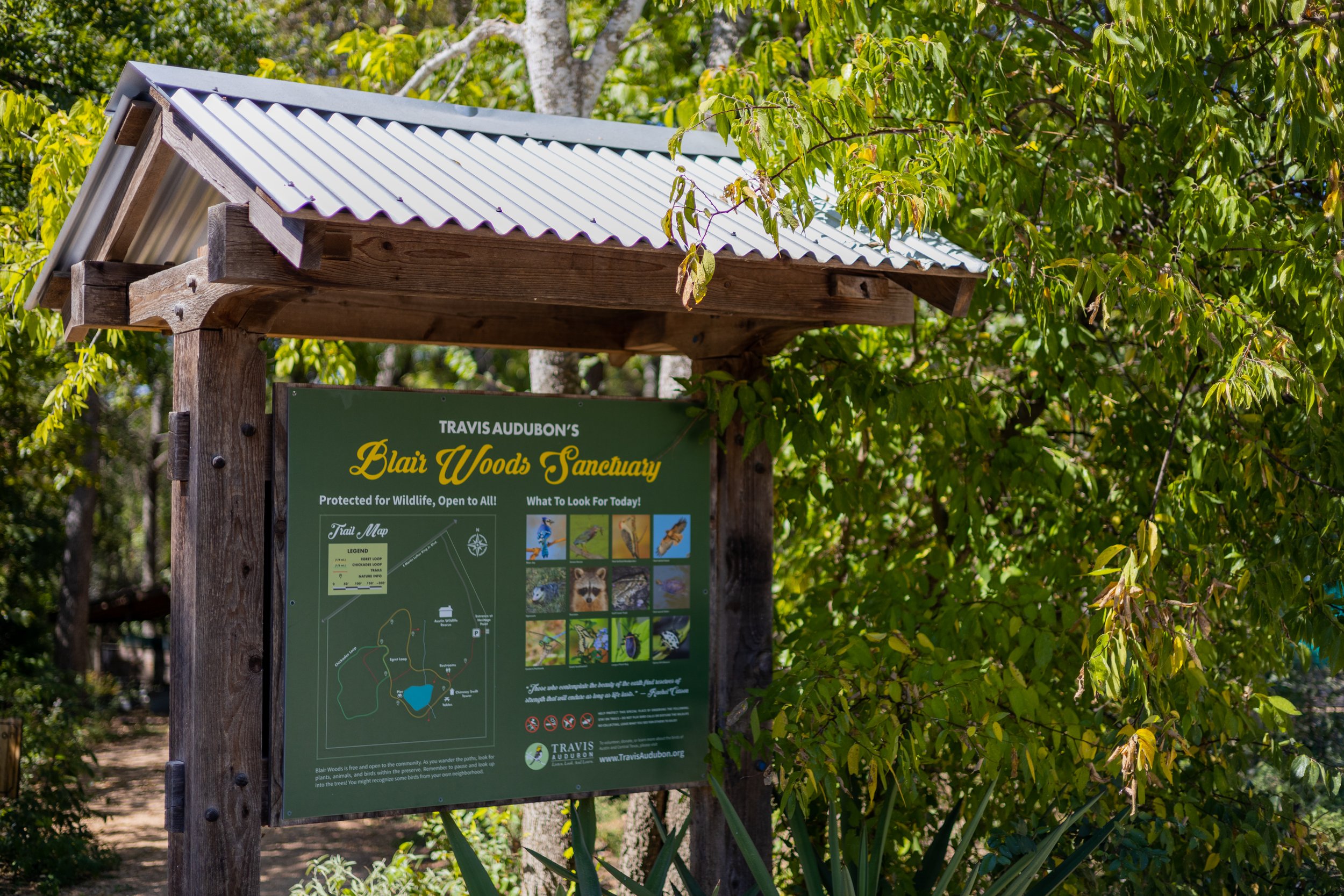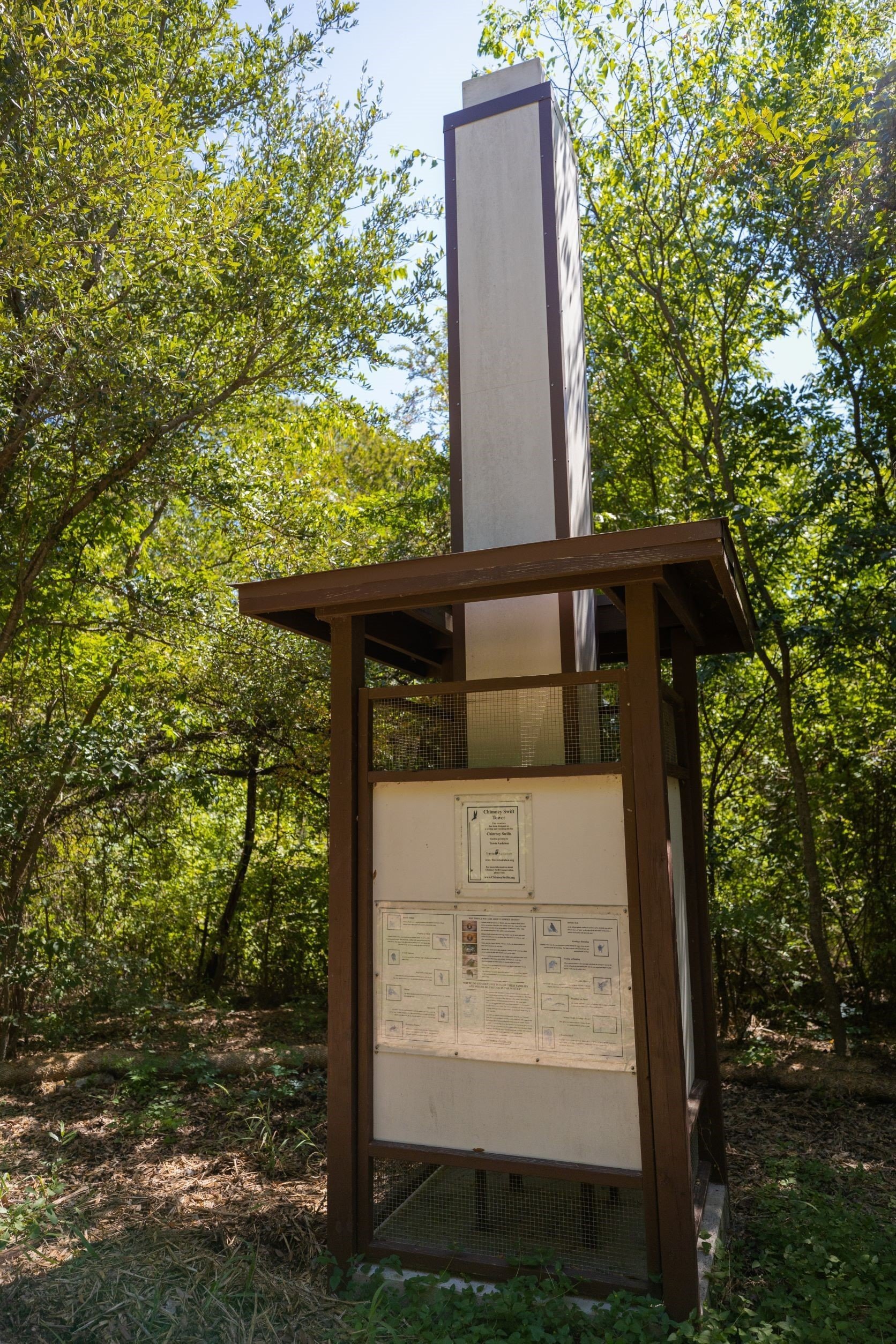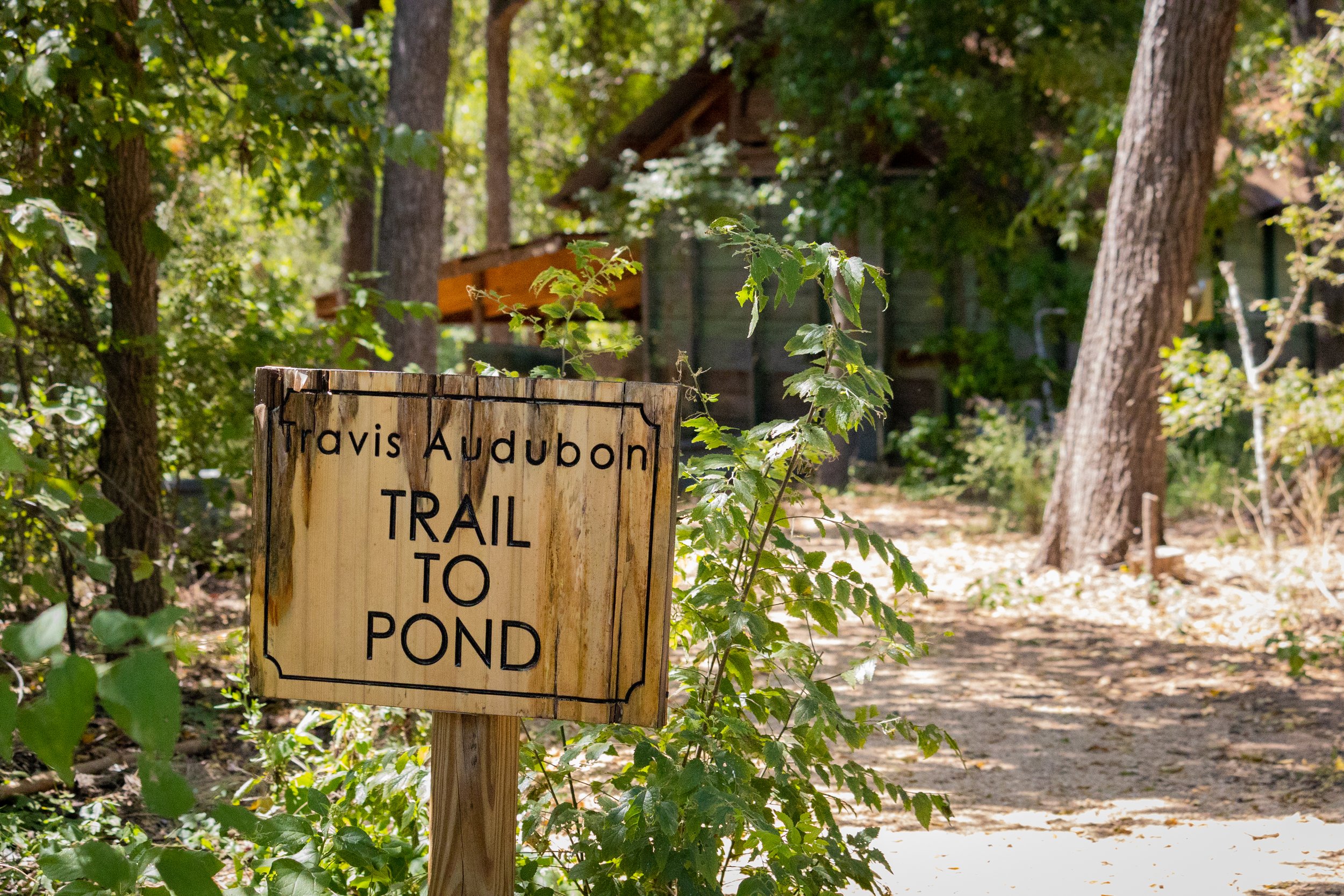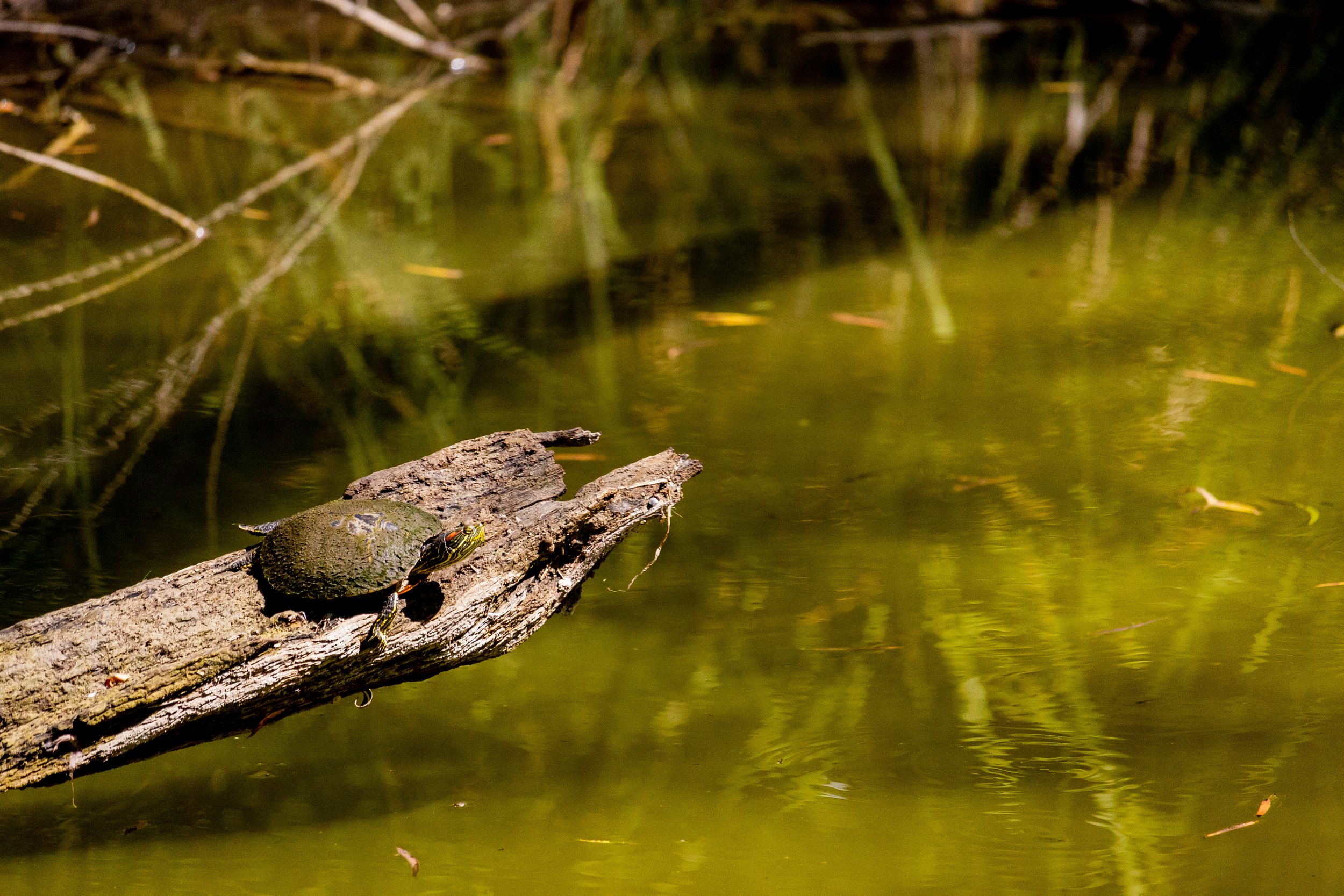Look Out Above - Travis Audubon Society
“What I remember:
my breathless body as I look into the wildness above,
raptors flying, diving, stooping, bodies of light, talismans, incantations, dust of the gods. Creatures of myth,
they hang in the sky like questions. They promise
nothing, indifferent to everything but death.
Still, still, I catch myself gasping, neck craned up,
follow the circles they build out of sky, reach
for their brutal mystery, the alien spark of more.”
In a sudden blur of movement, blue jays swarmed the sky above where Cheney and I stood. Stunned by the marvel of what happened, we looked up at the trees to find five or six birds bending their necks as they listened to bird calls emanating from the phone in my hand.
This mystifying experience came unexpectedly while taking pictures at Blair Woods Nature Preserve, a conservation funded by Austin’s independent chapter of the National Audobon Society. Drift Photographer Cheney and I initially went out to the preserve to capture photos of wildlife, but after attracting a swarm of blue jays, we left with more than we set out for.
To find out more about bird-watching, I spoke with Caley Zuzula, Travis Audubon’s program manager. She helped me understand the positive impacts birding can have on individuals and communities.
Zuzula began her birdwatching journey in 2015 before earning her master’s degree in conservation biology at Texas State. Her summer job as a naturalist in Costa Rica required her to observe and study birds. She immediately fell in love with the tranquility and groundedness of her work.
“Learning and listening for birds, you end up noticing so many other things too,” Zuzula said. “It allows you to stop and look at everything around you. It’s really peaceful.”
The mission of Travis Audobon, a non-profit corporation founded in 1952, recognizes the connection between, “conserving the wildlife habitat and the ecological balance necessary for healthy, sustainable and habitable communities.” They host free field trips where experienced birders guide groups of novice birdwatchers through sanctuaries. They also provide classes on birding for all levels of experience, even hosting youth birding camps in the summer.
Their efforts to include the community not only get people interested in bird-watching but actively encourage efforts towards environmentalism. One of Travis Audubon’s conservation endeavors is the Lights Out initiative, which educates Austin citizens on the effects of light pollution on birds’ migration.
“It’s about having people learn what’s possible and having them make a choice that they’re comfortable with,” Zuzula said.
Birds use the moon and stars at night to navigate during migration — light pollution from cities interferes with their navigation. When birds become disoriented by city lights, they often fly into buildings, lose their way, or, fall from flight out of exhaustion.
Travis Audubon’s efforts to dim city lights have reduced Austin’s light pollution significantly. “It’s been going well,” Zuzula said. “A lot more people in Austin have learned about turning off their lights for migrating birds.”
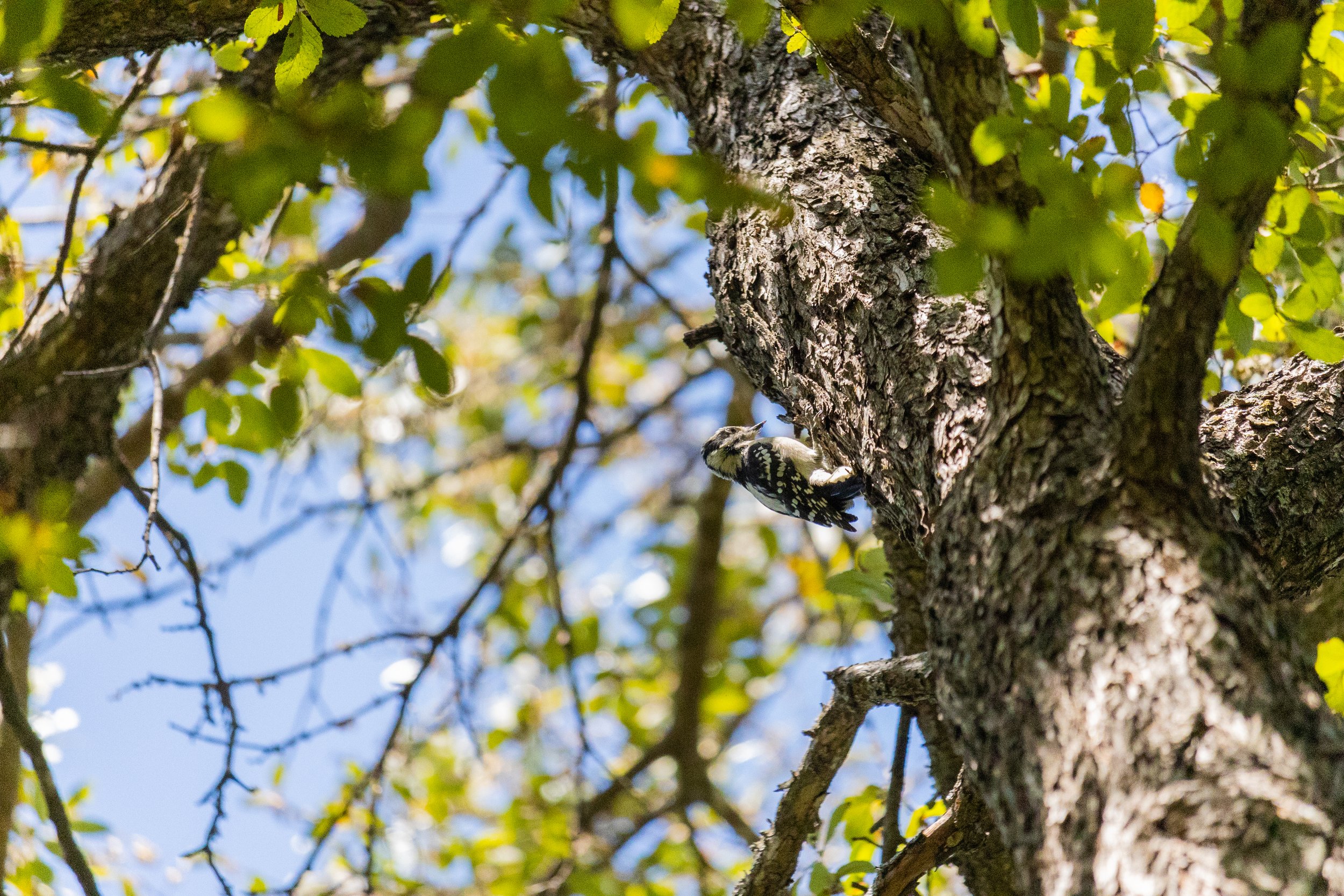
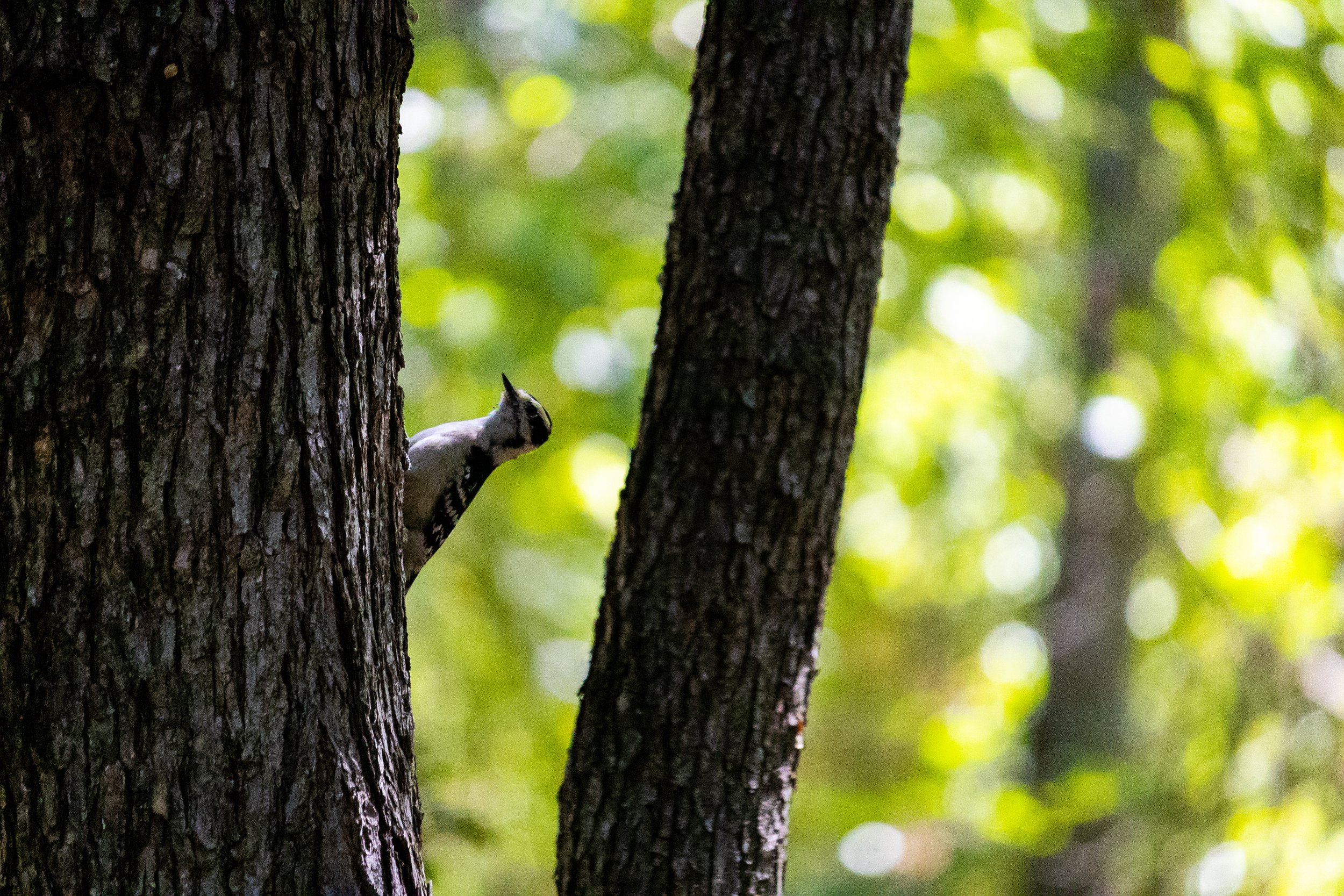
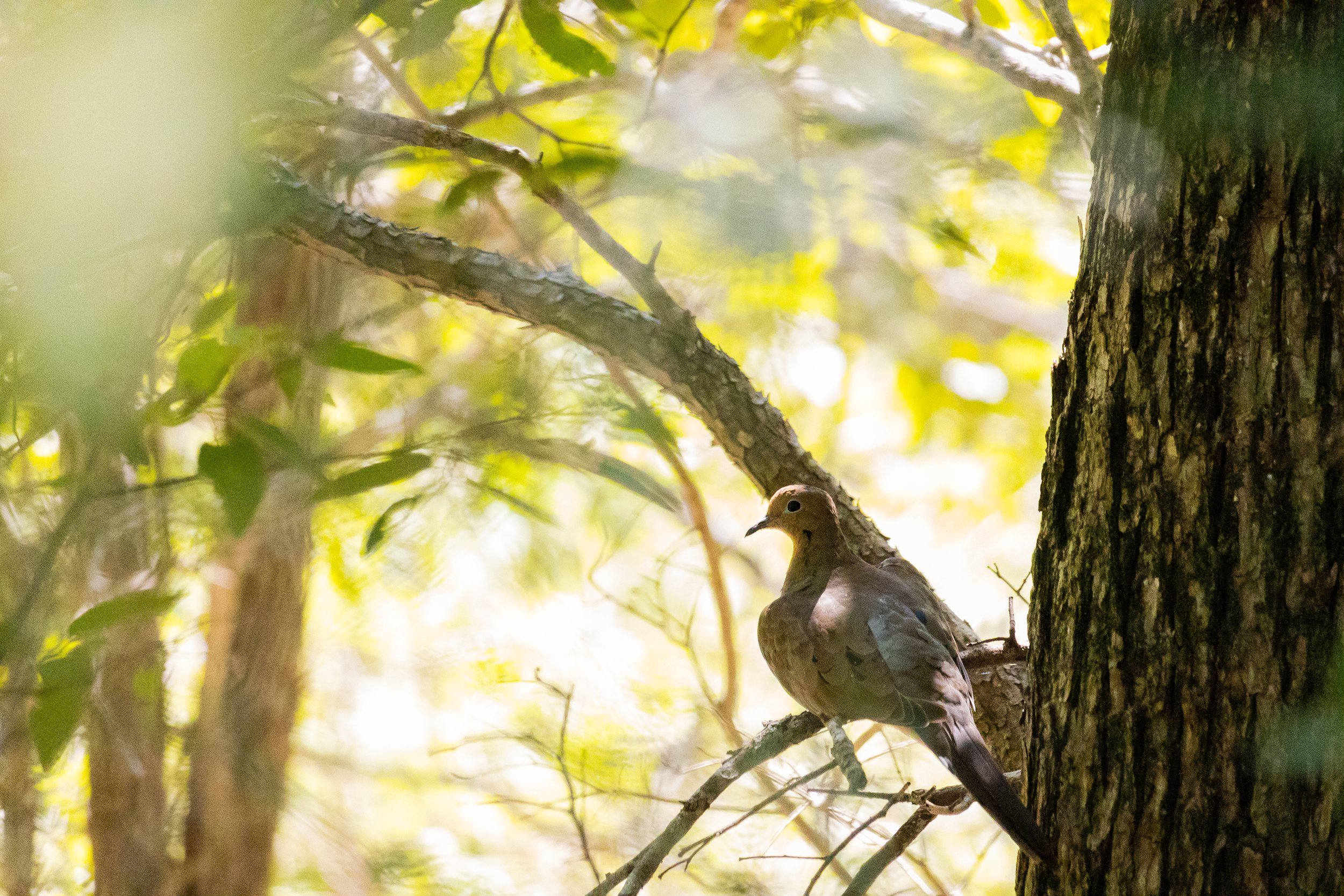
Although birding might sound like a very niche hobby, reserved for ornithologists and conservationists, recent surveys found birding is the fastest-growing outdoor recreational activity in the US.
“Some of the best birders… almost none of them have a background in conservation,” Zuzula said. “One is a child psychologist, one is a professor in nutrition, one of them is a criminologist, one is an ecotherapist — they’re some of the best birders I've ever met.”
Travis Audubon hosts Purple Martin Parties in the summer, a popular event where people watch Purple Martins fly into their roosts in Austin during their trip southward.
After volunteers discover the sites, Travis Audubon sends out the signal and crowds put down chairs to watch the miraculous display of Purple Martin’s, igniting the sky above with their captivating motion. Last year, the martins gathered in flocks at the Capitol Plaza off of 1-35, a shopping center containing mattress stores and chain restaurants.
“They have this interesting behavior where they’re migrating back south for the winter and stop at these roosting sites,” Zuzula said. “Somehow, they know where these roosting sites are along their route. Hundreds of thousands of them will crowd into these trees.”
Before descending into their roosts for the night, the Purple Martins participate in an aerial show.
“One of the reasons they're so popular in art is that they can go wherever they want, whenever they want,” Zuzula said. “They can fly. I think that's something that people find really inspirational about birds. It’s just so fascinating — they somehow know how to do it.”
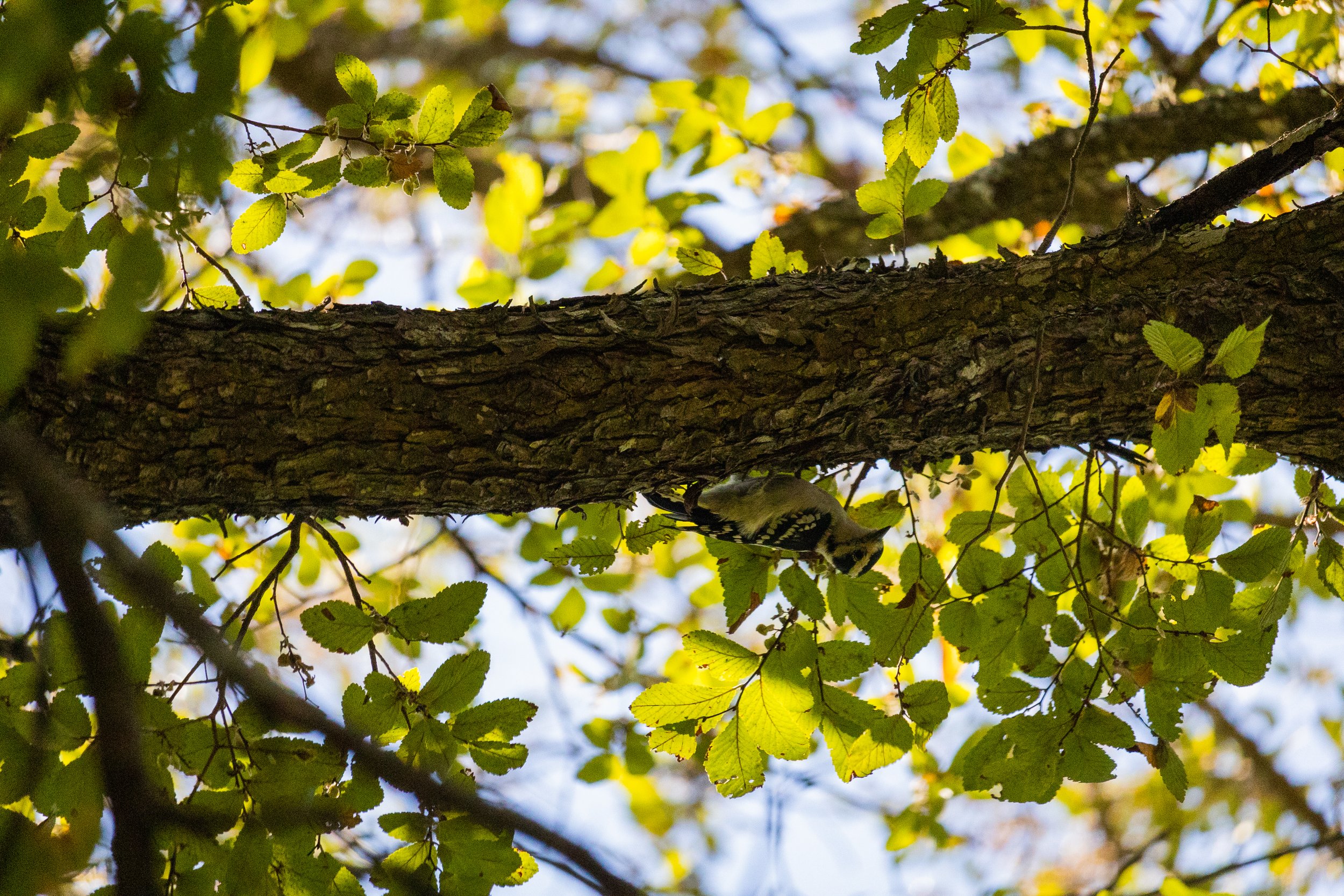
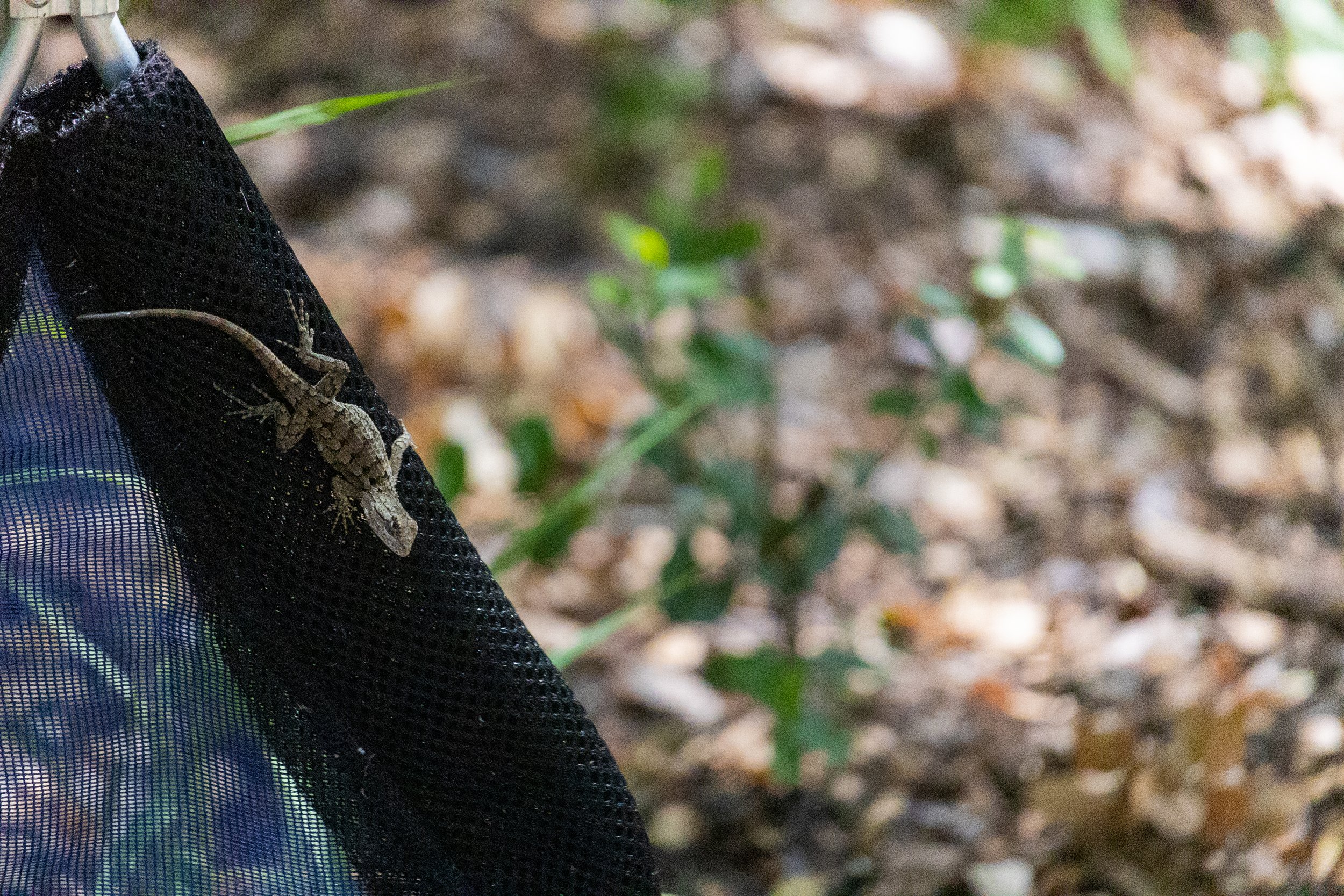
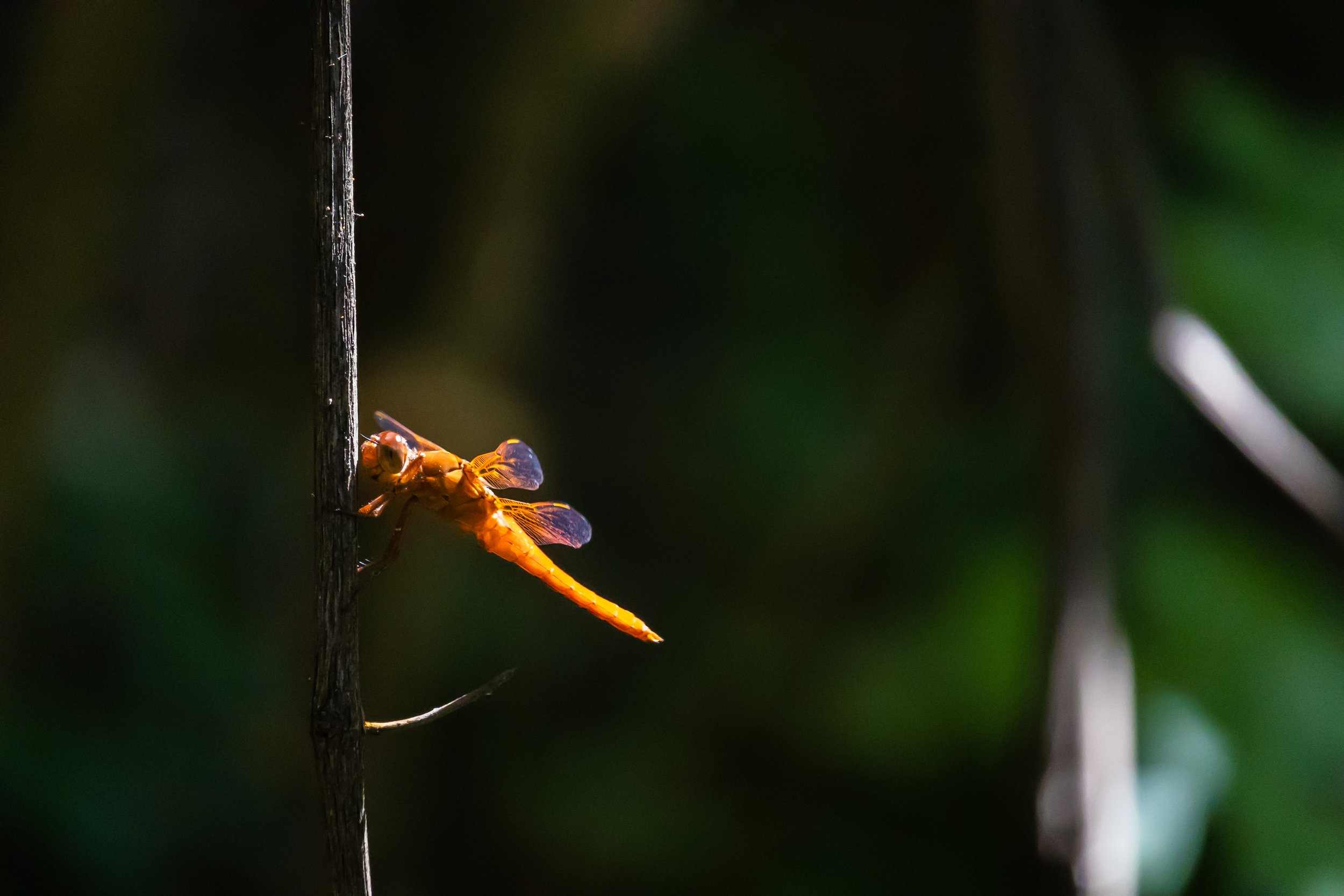
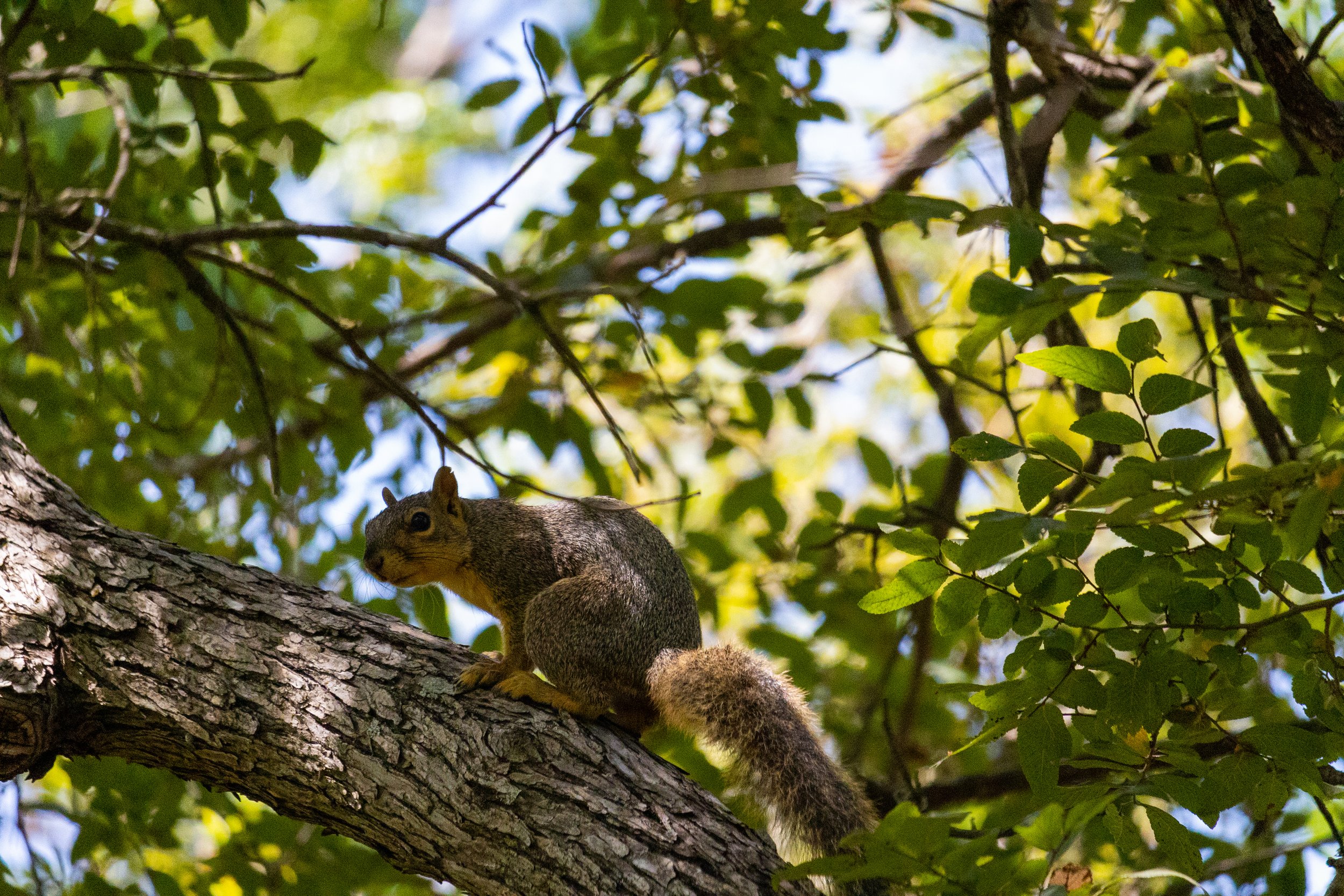
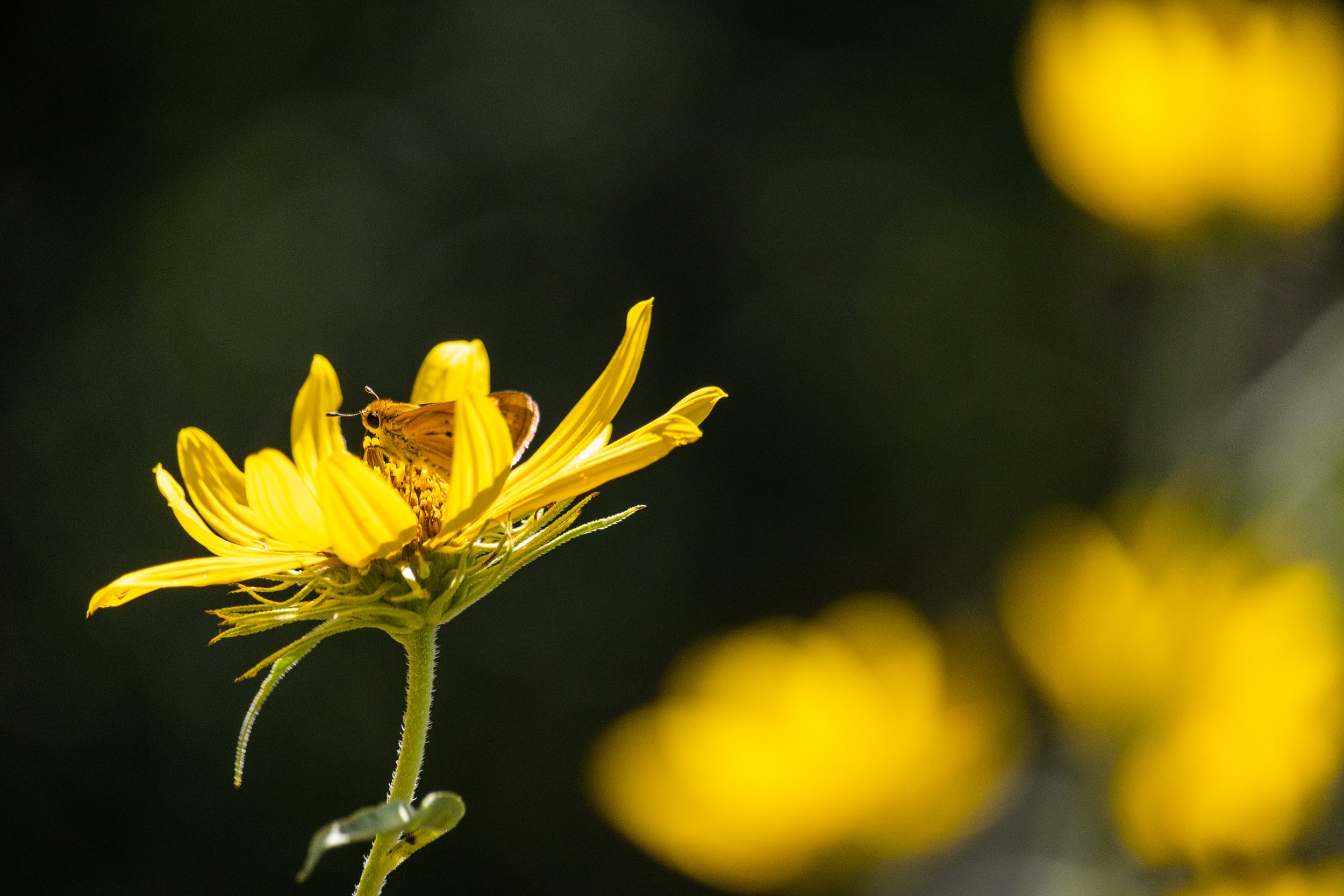
Photos by Cheney Stephenson-
December 2025
- Dec 7, 2025 Outlets for Uplifting Green Spaces and Why They Matter Dec 7, 2025
-
November 2025
- Nov 20, 2025 Icarus Nov 20, 2025
- Nov 1, 2025 The Secret Life of Thrifters Nov 1, 2025
- Nov 1, 2025 Three Nights in Isolation Nov 1, 2025
-
October 2025
- Oct 26, 2025 Climbing Vines: An Essay on Sustainability and Social Change Oct 26, 2025
- Oct 26, 2025 Grounded: Campus Environmental Group Uses Yoga to Connect with Nature Oct 26, 2025
- Oct 26, 2025 Centro isn’t a coffee shop, it’s a coffee home Oct 26, 2025
- Oct 26, 2025 Listening for Birdsong: Memory, Nature and Ecological Nostalgia Oct 26, 2025
- Oct 26, 2025 Recycling to Ease your ‘Eco-Guilt’ Oct 26, 2025
-
April 2025
- Apr 24, 2025 My Chinaberry Tree Apr 24, 2025
- Apr 22, 2025 Trading the Earth for Knowledge: the True Cost of AI Apr 22, 2025
- Apr 17, 2025 Honeybee Apr 17, 2025
- Apr 9, 2025 A Songbird’s Fate in a Developer’s Hands Apr 9, 2025
-
February 2025
- Feb 14, 2025 How to Be Fossilized Feb 14, 2025
- Feb 14, 2025 Women and Mothers Feb 14, 2025
- Feb 14, 2025 To the worm, Feb 14, 2025
- Feb 14, 2025 At the whim of the fishes, Feb 14, 2025
- Feb 14, 2025 Creek Crush Feb 14, 2025
- Feb 10, 2025 Austin-Based Nail Artists Preserve Chicano Culture Amidst Gentrification Feb 10, 2025
- Feb 1, 2025 Waterloo Conservancy hosts 10th annual “Creek Show” Feb 1, 2025
- Feb 1, 2025 Inspiration at the Texas Farmers Market at Mueller Feb 1, 2025
-
January 2025
- Jan 31, 2025 Community pushes back against development in East Austin park Jan 31, 2025
- Jan 31, 2025 Thirsty Jan 31, 2025
- Jan 31, 2025 Weeds & Wires Jan 31, 2025
- Jan 31, 2025 The Olive Branch Jan 31, 2025
- Jan 31, 2025 Ansel Adams: A Life of Preservation, Photography and Wilderness Jan 31, 2025
-
December 2024
- Dec 10, 2024 Vatnajökull: Unfathomably Large Things and Finding Peace in Smallness Dec 10, 2024
- Dec 5, 2024 On Place, Memory, and People Dec 5, 2024
- Dec 1, 2024 A Bit of Everything at Republic Square Dec 1, 2024
-
November 2024
- Nov 21, 2024 The Safety of Our Furry Friends in Austin, a Concrete Heat Radiating Jungle Nov 21, 2024
- Nov 19, 2024 Solitude in Alaska Nov 19, 2024
- Nov 12, 2024 Offerings Nov 12, 2024
- Nov 10, 2024 Mozart’s Fall Jazz Nov 10, 2024
-
October 2024
- Oct 24, 2024 A Journey Into Nature’s Laboratory: The Galápagos Islands Oct 24, 2024
- Oct 22, 2024 The Natural Springs of Texas are Disappearing Oct 22, 2024
- Oct 17, 2024 Echoes - Volume 3: Astigmatism Oct 17, 2024
- Oct 13, 2024 The Power of Coffee and People Oct 13, 2024
- Oct 10, 2024 Annual Keep Austin Beautiful Event Restores Austin’s Environment Oct 10, 2024
-
September 2024
- Sep 28, 2024 Latino Outdoors Austin Pushes for Equity in Outdoor Recreation Sep 28, 2024
-
July 2024
- Jul 19, 2024 Casa Neverlandia Keeps Austin Weird Jul 19, 2024
-
May 2024
- May 3, 2024 Exploring the Fascination Behind Mycology with UT’s Fungus Enthusiasts May 3, 2024
-
April 2024
- Apr 23, 2024 Flying Above Zilker Park - ABC Kite Fest 2024 Apr 23, 2024
- Apr 18, 2024 Speaking for the Trees: How Environmental Communications Protects the Amazon Rainforest Apr 18, 2024
- Apr 16, 2024 Beings of Earth: Reflections on Nature and Home Apr 16, 2024
- Apr 14, 2024 The sun, the moon, and the World: The Beauty of the Solar Eclipse Apr 14, 2024
- Apr 12, 2024 The Total Solar Eclipse Through the Eyes of UT Students Apr 12, 2024
- Apr 9, 2024 Echoes - Volume 02 Apr 9, 2024
- Apr 4, 2024 An Endless String of Colorful, Dancing Beads Apr 4, 2024
- Apr 2, 2024 Food Insecurity Amongst Texas Children Continues to Climb Apr 2, 2024
-
March 2024
- Mar 31, 2024 Getting My Hands in the Dirt Mar 31, 2024
- Mar 21, 2024 Austin City Council Approves Grant to Fund New Recycling Warehouse Mar 21, 2024
- Mar 7, 2024 UT Aquaponics: Using Fish for the Future Mar 7, 2024
- Mar 5, 2024 Giving New Life to Austin’s Fallen Trees Mar 5, 2024
-
February 2024
- Feb 29, 2024 Echoing Poetry into Nature with Visual Arts Feb 29, 2024
- Feb 25, 2024 A Community of Craft Feb 25, 2024
- Feb 15, 2024 Climbing Culture, Conservation: The Story of Reimers Ranch Feb 15, 2024
- Feb 13, 2024 Building community one slackline at a time Feb 13, 2024
- Feb 11, 2024 The Magic of Eating Feb 11, 2024
- Feb 8, 2024 It’s Snowing Texans in Beautiful Colorado Feb 8, 2024
- Feb 1, 2024 Reintroducing: The Current Feb 1, 2024
-
January 2024
- Jan 8, 2024 Looking Back: Día de Los Muertos and Mexic-Arte Museum’s Viva la Vida Festival Jan 8, 2024
-
December 2023
- Dec 8, 2023 Student organization helps with litter-prevention around campus, city Dec 8, 2023
-
November 2023
- Nov 30, 2023 Cultivating Tranquility: Tips for Indoor Plants Nov 30, 2023
- Nov 16, 2023 The Beauty of Being a Kaleidoscope Nov 16, 2023
- Nov 14, 2023 The Microfarm behind Este and Suerte Nov 14, 2023
- Nov 7, 2023 Puptopia 2023: The Ultimate Dog Festival Nov 7, 2023
- Nov 7, 2023 Thrifting my way through Austin Nov 7, 2023
-
October 2023
- Oct 31, 2023 Mother Nature’s Wine: Sustainability and Winemaking Oct 31, 2023
- Oct 20, 2023 Cancún, Austin: Cities in the World of Gentrification Oct 20, 2023
- Oct 13, 2023 Solo traveling: Finding self-assurance in cows and Canadian farms Oct 13, 2023
- Oct 10, 2023 My reflections after going Zero Waste for a week Oct 10, 2023
- Oct 3, 2023 Struggles in Maintaining a Plant-Based Diet on Campus Oct 3, 2023
-
April 2023
- Apr 26, 2023 The Mountains Grow Cold at Night Apr 26, 2023
- Apr 17, 2023 Stampede on Speedway: The 2023 Longhorn Run Apr 17, 2023
- Apr 10, 2023 Mother Nature: Co-therapist Apr 10, 2023
-
March 2023
- Mar 27, 2023 Ideas and Innovation in Food at SXSW Mar 27, 2023
- Mar 8, 2023 Austinites Catch a Runner’s High Mar 8, 2023
-
February 2023
- Feb 23, 2023 Trash to Treasure: Making Sustainable Fashion Free Feb 23, 2023
-
January 2023
- Jan 23, 2023 Pájaro Graznido — Squawk Bird Jan 23, 2023
-
December 2022
- Dec 2, 2022 Austin City Limits Waste at Festival Dec 2, 2022
-
November 2022
- Nov 9, 2022 Puptopia — Dogs of Austin Nov 9, 2022
- Nov 2, 2022 Look Out Above - Travis Audubon Society Nov 2, 2022
-
October 2022
- Oct 12, 2022 Diving to a New Comfort Zone Oct 12, 2022
-
September 2022
- Sep 28, 2022 Cast & Blast: Opening Weekend in the Heart of Texas Sep 28, 2022
-
August 2022
- Aug 31, 2022 Welcome Back Aug 31, 2022
- Aug 14, 2022 Raasin in the Sun: Artists Keeping Austin Beautiful Aug 14, 2022
-
July 2022
- Jul 31, 2022 Rethinking Shutter Speed: Towards Thoughtful Wilderness Photography Jul 31, 2022
- Jul 17, 2022 Climbing on the Cheap: Deep Water Solo Climbing at Pace Bend Park Jul 17, 2022
- Jul 3, 2022 Meet the BEEVO Beekeeping Society: The Longhorns Protecting Austin’s Pollinators Jul 3, 2022
-
June 2022
- Jun 19, 2022 Foraging for Feelings at Festival Beach Food Forest; Austin’s Urban Farm Jun 19, 2022
- Jun 17, 2022 Top 10 Nature Documentaries Jun 17, 2022
-
June 2021
- Jun 7, 2021 Dogs of Zilker Jun 7, 2021
- Jun 4, 2021 Indigenous Impacts Jun 4, 2021
- Jun 2, 2021 Saving the Golden-Cheeked Warbler Jun 2, 2021
-
May 2021
- May 7, 2021 Getting Outside and Giving Back May 7, 2021
-
April 2021
- Apr 30, 2021 Connected to More Than Just a Strap Apr 30, 2021
- Apr 23, 2021 Breaking the One Rule Apr 23, 2021
- Apr 12, 2021 Pilgrimage to the Perfect Sweatshirt Apr 12, 2021
- Apr 9, 2021 The Trash Pandas of Texas Apr 9, 2021
- Apr 7, 2021 Working Out in the Wild Apr 7, 2021
-
March 2021
- Mar 31, 2021 Zoom Zombies Mar 31, 2021
- Mar 24, 2021 Whole Earth Provision Co.: More Than a Store Mar 24, 2021
-
February 2021
- Feb 19, 2021 Streetboarding: Hitting the Asphalt Feb 19, 2021
-
January 2021
- Jan 28, 2021 Nature Serves as a Constant During Change Jan 28, 2021
-
December 2020
- Dec 7, 2020 Minimizing Waste in a Plastic-Filled World Dec 7, 2020
-
November 2020
- Nov 25, 2020 The Future of Medina Lake Nov 25, 2020
- Nov 23, 2020 Being Thrifty with Your Thrifting Nov 23, 2020
- Nov 6, 2020 Southbound and Back Again: Gambling with Texas Swells Nov 6, 2020
- Nov 4, 2020 Sustainable College Living Nov 4, 2020
-
October 2020
- Oct 31, 2020 Green Burial Traditions Oct 31, 2020
- Oct 30, 2020 Climate Anxiety: Our Internal Fuel to Climate Activism Oct 30, 2020
- Oct 29, 2020 Climate Change Should Be on Your Ballot Oct 29, 2020
- Oct 28, 2020 Sustainable Living: Out the Door and Down the Street Oct 28, 2020
- Oct 26, 2020 Texas State Parks implement COVID-19 policy Oct 26, 2020
- Oct 21, 2020 Outside in Austin Oct 21, 2020
- Oct 19, 2020 Night Lights and Reflections Oct 19, 2020
- Oct 12, 2020 A Texan Band’s Fight to Retain its Identity Oct 12, 2020
-
August 2020
- Aug 16, 2020 Planning the Ideal Post-Quarantine Roadtrip Aug 16, 2020
-
July 2020
- Jul 9, 2020 Waste-Free Outdoors Jul 9, 2020
- Jul 2, 2020 On the Road Again Jul 2, 2020
-
June 2020
- Jun 23, 2020 On the Road Jun 23, 2020
-
May 2020
- May 19, 2020 Is Danger Worth Fearing? May 19, 2020
- May 5, 2020 Here's Why I Meditate, You Should Try It May 5, 2020
-
April 2020
- Apr 30, 2020 Coping with Corona Apr 30, 2020
- Apr 27, 2020 Architecture that Points Outward Apr 27, 2020
- Apr 22, 2020 How to Throw a Zero Waste Party Apr 22, 2020
- Apr 22, 2020 Earth Day Turns 50 Apr 22, 2020
- Apr 20, 2020 Cover Your Mouth, Not Your Eyes Apr 20, 2020
- Apr 18, 2020 Not Idaho, But Not Bad Apr 18, 2020
- Apr 15, 2020 The Mentality Behind the Miles Apr 15, 2020
- Apr 10, 2020 How I Learned to Love Being Vastly Uncomfortable Apr 10, 2020
- Apr 6, 2020 Natural Oasis in an Urban Jungle Apr 6, 2020
- Apr 3, 2020 Biking in Remembrance of Cancer Fighters Apr 3, 2020
-
March 2020
- Mar 27, 2020 After Hours at House Park Mar 27, 2020
- Mar 27, 2020 The Art of ‘Chalking Up’ Mar 27, 2020
- Mar 26, 2020 Through the Traveler’s Lens Mar 26, 2020
- Mar 26, 2020 If There’s Time Mar 26, 2020

